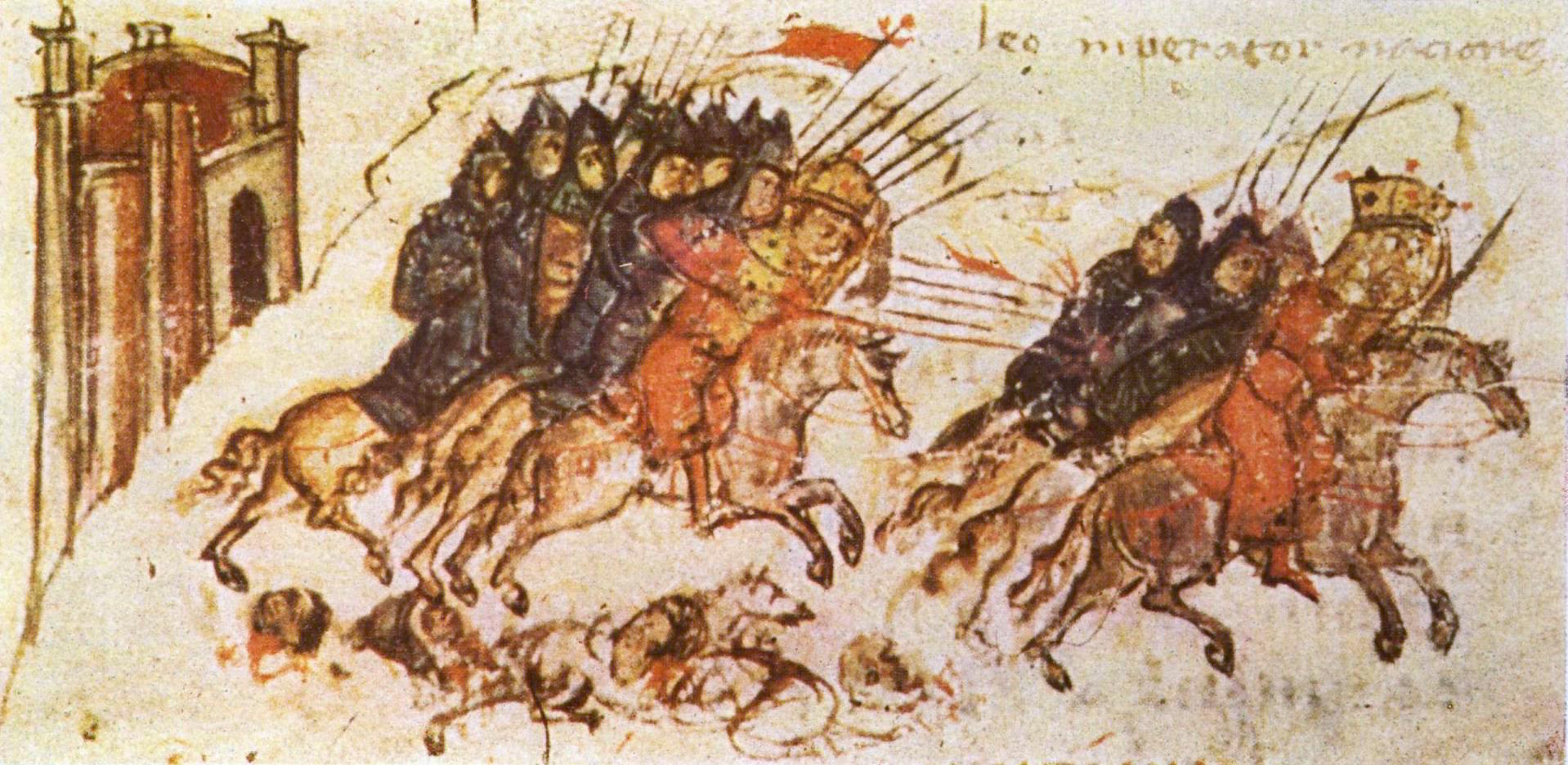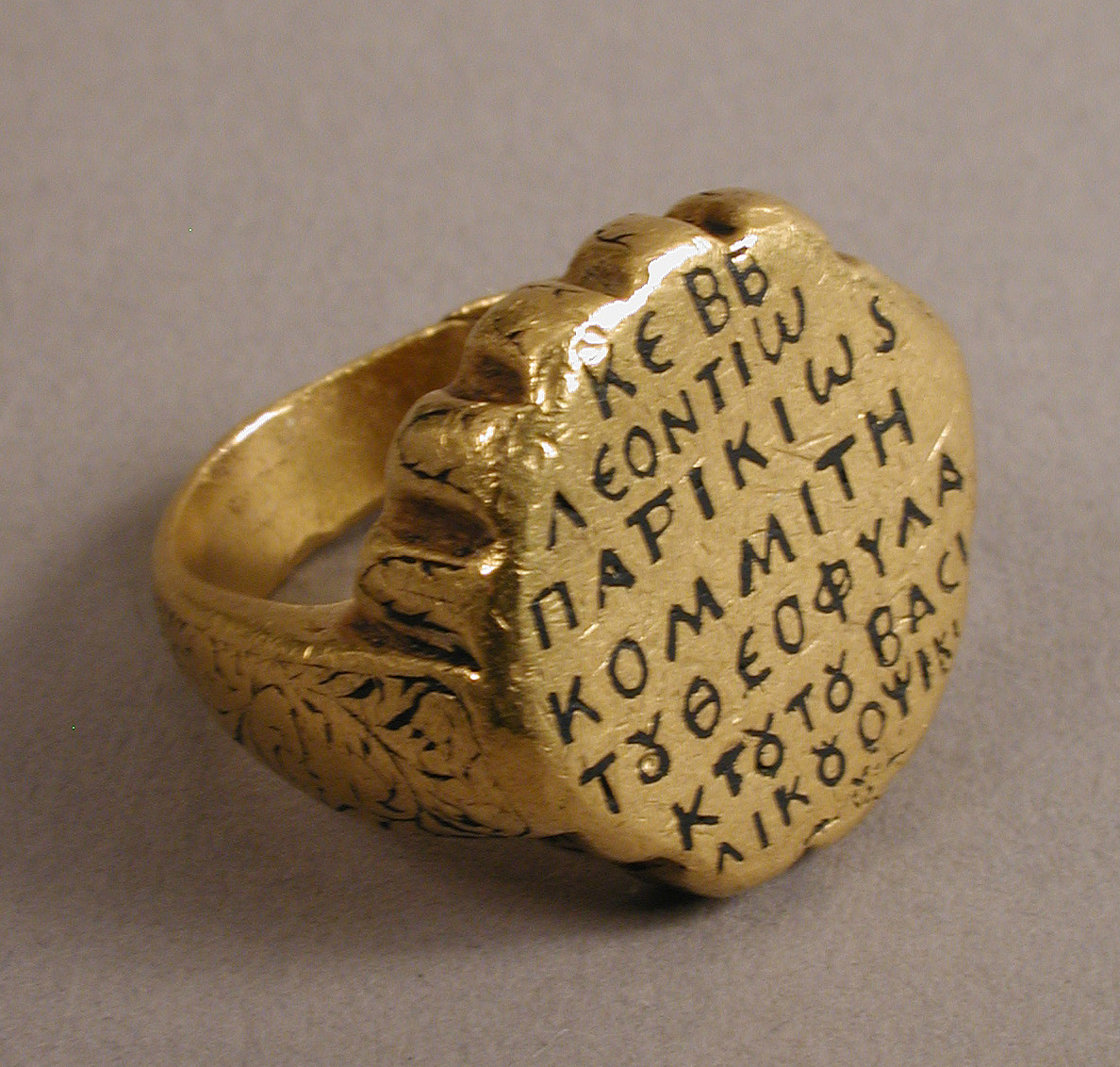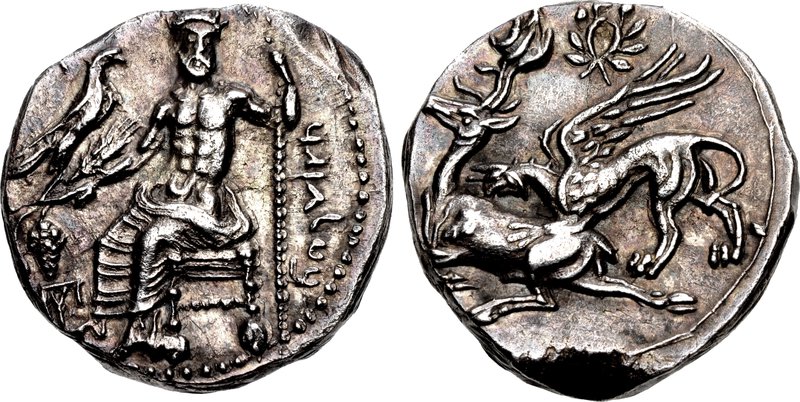|
Asia Minor Slavs
The Asia Minor Slavs were the historical South Slav communities relocated by the Byzantine Empire from the Balkans to Asia Minor (Anatolia). After Maurice's Balkan campaigns (582–602) and during the subduing of the Slavs in the Balkans in the 7th and the 8th centuries, large communities were forcefully relocated to Anatolia as military units to fight the Umayyad Caliphate. History 7th century The earliest evidence for a relocation of Slavs from the Balkans may be a seal dated to 650. In 658 and 688/9 the Byzantines invited groups of Slavic settlers to Bithynia. Constans II settled captured Slavs in Asia Minor, and 5,000 of these joined Abdulreman ibn Khalid in 664-665. There was a town in Bithynia known as Gordoservon, mentioned in 680–81, whose name possibly derived from the Serbs resettled there from the areas "around river Vardar" by Byzantine Emperor Constans II (r. 641–668), in the mid-7th century (in ca. 649 or 667). Justinian II (685-695) also settled as many as 3 ... [...More Info...] [...Related Items...] OR: [Wikipedia] [Google] [Baidu] |
South Slav
South Slavs are Slavic peoples who speak South Slavic languages and inhabit a contiguous region of Southeast Europe comprising the eastern Alps and the Balkan Peninsula. Geographically separated from the West Slavs and East Slavs by Austria, Hungary, Romania, and the Black Sea, the South Slavs today include Bosniaks, Bulgarians, Croats, Macedonians, Montenegrins, Serbs, and Slovenes, respectively the main populations of Bosnia and Herzegovina, Bulgaria, Croatia, North Macedonia, Montenegro, Serbia, and Slovenia. In the 20th century, the country of Yugoslavia (from Serbo-Croatian, literally meaning "South Slavia" or "South Slavdom") united majority of South Slavic peoples and lands—with the exception of Bulgarians and Bulgaria—into a single state. The Pan-Slavic concept of ''Yugoslavia'' emerged in the late 17th century Croatia, at the time party of Habsburg Monarchy, and gained prominence through the 19th-century Illyrian movement. The Kingdom of Serbs, Croats and Slovenes, ... [...More Info...] [...Related Items...] OR: [Wikipedia] [Google] [Baidu] |
Bulgars
The Bulgars (also Bulghars, Bulgari, Bolgars, Bolghars, Bolgari, Proto-Bulgarians) were Turkic semi-nomadic warrior tribes that flourished in the Pontic–Caspian steppe and the Volga region during the 7th century. They became known as nomadic equestrians in the Volga-Ural region, but some researchers say that their ethnic roots can be traced to Central Asia. During their westward migration across the Eurasian steppe, the Bulgar tribes absorbed other tribal groups and cultural influences in a process of ethnogenesis, including Iranian, Finnic and Hunnic tribes. Modern genetic research on Central Asian Turkic people and ethnic groups related to the Bulgars points to an affiliation with Western Eurasian populations. The Bulgars spoke a Turkic language, i.e. Bulgar language of Oghuric branch. They preserved the military titles, organization and customs of Eurasian steppes, as well as pagan shamanism and belief in the sky deity Tangra. The Bulgars became semi-sedentary du ... [...More Info...] [...Related Items...] OR: [Wikipedia] [Google] [Baidu] |
George Ostrogorsky
Georgiy Aleksandrovich Ostrogorskiy (russian: Георгий Александрович Острогорский; 19 January 1902 – 24 October 1976), known in Serbian Serbian may refer to: * someone or something related to Serbia, a country in Southeastern Europe * someone or something related to the Serbs, a South Slavic people * Serbian language * Serbian names See also * * * Old Serbian (disambiguat ... as Georgije Aleksandrovič Ostrogorski ( sr-Cyrl, Георгије Александрович Острогорски) and English language, English as George Alexandrovich Ostrogorsky, was a Russian-born Yugoslavian historian and Byzantinist who was widely known for his achievements in Byzantine studies. He was a professor at the University of Belgrade. Early life and education Ostrogorsky was born in Saint Petersburg, Imperial Russia, Russia Empire, the son of a secondary school principal and a writer on pedagogical subjects. He completed his secondary education in a ... [...More Info...] [...Related Items...] OR: [Wikipedia] [Google] [Baidu] |
Lubor Niederle
Lubor Niederle (September 20, 1865 – June 14, 1944) was a Czech archeologist, anthropologist and ethnographer. He is seen as one of the founders of modern archeology in Czech lands. He was born in Klatovy. He studied at the Charles University in Prague from 1883 to 1887. He was initially interested in classical archaeology, then studied anthropology, sociology and ethnology. Later, he studied in Munich under professor Johannes Rank (1889) and in Paris under professor Léonce Manouvriere at the École d’anthropologie. Niederle also travelled in several Slavic countries, studying archaeological findings and historical documents. In 1898 Niederle was named professor at the Charles University. As archaeologist he had represented the "university school" (''univerzitní škola''), opposed to the "museum school" (''muzejní škola'') represented by archaeologist Josef Ladislav Píč. During 1907–08 Niederle served as a dean of Faculty of Philosophy, during 1908–09 as a vice ... [...More Info...] [...Related Items...] OR: [Wikipedia] [Google] [Baidu] |
Jovan Erdeljanović
Jovan Erdeljanović (11 November 1874 – 12 February 1944) was a Serbian and Yugoslav ethnologist. Biography Jovan Erdeljanović was born in Pančevo, Austria-Hungary. He studied at the universities of Vienna, Berlin, Leipzig and Prague. In 1905 he obtained his doctorate as Doctor of Philosophy at Charles University in Prague. In 1906, Erdeljanović began working at the University of Belgrade, elected Professor at Department of Ethnology of the philosophical Faculty since 1922. He remained at the University until 1941 and was member of Serbian Academy of Sciences. The first recognized work of anthropological interest in ethnicity was done by Erdeljanović, named as one of the founding fathers of Serbian ethnology. His works are influenced by ideas of evolutionism and Yugoslavism and he represented the theory that Yugoslavs are people of one blood and one origin. Selected works *''Etnološka građa i rasprave'', Srpska kraljevska akademija, Belgrade 1911. * ''Tragovi najstarije ... [...More Info...] [...Related Items...] OR: [Wikipedia] [Google] [Baidu] |
Mardaites
The Mardaites () or al-Jarajima ( syr, ܡܪ̈ܕܝܐ; ar, ٱلْجَرَاجِمَة / ALA-LC: ''al-Jarājimah''), inhabited the highland regions of the Nur Mountains. The Mardaites were early Christians following either Miaphysitism or Monothelitism. Little is known about their ethnicity, but it has been speculated that they might have been Persians (see, for a purely linguistic hypothesis, the Amardi, located south of the Caspian sea in classical times) or Armenians, yet other sources claim them to have been native to the Levant or possibly even from the Arabian peninsula. Their other Arabic name, ''al-Jarājimah'', suggests that some were natives of the town Jurjum in Cilicia; the name Marada in Arabic is the plural of Mared which could mean a giant, a supernatural beings like Jinn, a high mountain or a rebel. Whether their name was due to their existence outside of legitimate political authority or their residence in the mountains is not known. They were joined later by variou ... [...More Info...] [...Related Items...] OR: [Wikipedia] [Google] [Baidu] |
Byzantine Navy
The Byzantine navy was the naval force of the East Roman or Byzantine Empire. Like the empire it served, it was a direct continuation from its Imperial Roman predecessor, but played a far greater role in the defence and survival of the state than its earlier iteration. While the fleets of the unified Roman Empire faced few great naval threats, operating as a policing force vastly inferior in power and prestige to the legions, the sea became vital to the very existence of the Byzantine state, which several historians have called a "maritime empire". The first threat to Roman hegemony in the Mediterranean was posed by the Vandals in the 5th century, but their threat was ended by the wars of Justinian I in the 6th century. The re-establishment of a permanently maintained fleet and the introduction of the dromon galley in the same period also marks the point when the Byzantine navy began departing from its late Roman roots and developing its own characteristic identity. This p ... [...More Info...] [...Related Items...] OR: [Wikipedia] [Google] [Baidu] |
Marines (military)
Marines, or naval infantry, are typically a military force trained to operate in littoral zones in support of naval operations. Historically, tasks undertaken by marines have included helping maintain discipline and order aboard the ship (reflecting the pressed nature of the ship's company and the risk of mutiny), the boarding of vessels during combat or capture of prize ships, and providing manpower for raiding ashore in support of the naval objectives. In most countries, the marines are an integral part of that state's navy. The exact term "marine" does not exist in many languages other than English. In French-speaking countries, two terms exist which could be translated as "marine", but do not translate exactly: and ; similar pseudo-translations exist elsewhere, e.g. in Portuguese (). The word ''marine'' means "navy" in many European languages such as Dutch, French, German, Italian and Norwegian. History In the earliest day of naval warfare, there was little dist ... [...More Info...] [...Related Items...] OR: [Wikipedia] [Google] [Baidu] |
Opsician Theme
The Opsician Theme ( gr, θέμα Ὀψικίου, ''thema Opsikiou'') or simply Opsikion (Greek: , from la, Obsequium) was a Byzantine theme (a military-civilian province) located in northwestern Asia Minor (modern Turkey). Created from the imperial retinue army, the ''Opsikion'' was the largest and most prestigious of the early themes, being located closest to Constantinople. Involved in several revolts in the 8th century, it was split in three after ca. 750, and lost its former pre-eminence. It survived as a middle-tier theme until after the Fourth Crusade. History The Opsician theme was one of the first four themes, and has its origin in the praesential armies of the East Roman army. The term ''Opsikion'' derives from the Latin term ''Obsequium'' ("retinue"), which by the early 7th century came to refer to the units escorting the emperor on campaign. It is possible that at an early stage, the ''Opsikion'' was garrisoned inside Constantinople itself. In the 640s, however, f ... [...More Info...] [...Related Items...] OR: [Wikipedia] [Google] [Baidu] |
Pontus (region)
Pontus or Pontos (; el, Πόντος, translit=Póntos, "Sea") is a region on the southern coast of the Black Sea, located in the modern-day eastern Black Sea Region of Turkey. The name was applied to the coastal region and its mountainous hinterland (rising to the Pontic Alps in the east) by the Greeks who colonized the area in the Archaic period and derived from the Greek name of the Black Sea: ''(')'', "Hospitable Sea", or simply ''Pontos'' () as early as the Aeschylean ''Persians'' (472 BC) and Herodotus' ''Histories'' (circa 440 BC). Having originally no specific name, the region east of the river Halys was spoken of as the country ''()'', lit. "on the uxinosPontos", and hence it acquired the name of Pontus, which is first found in Xenophon's '' Anabasis'' (). The extent of the region varied through the ages but generally extended from the borders of Colchis (modern western Georgia) until well into Paphlagonia in the west, with varying amounts of hinterland. Several ... [...More Info...] [...Related Items...] OR: [Wikipedia] [Google] [Baidu] |
Gaziura
Gaziura (Greek: ), was a town in Pontus, on the river Iris, near the point where its course turns northwards. Some scholars equate Gaziura with Talaura, others with Ibora Ibora was a city in the late Roman province of Helenopontus, which became a Christian bishopric. It is now called İverönü, ErbaaTurhal. E.g., It was the ancient residence of the kings of Pontus, but in Strabo's time it was deserted. (Strab. xii.) Dion Cassius (xxxv. 12) notices it as a place where [...More Info...] [...Related Items...] OR: [Wikipedia] [Google] [Baidu] |
Armenians
Armenians ( hy, հայեր, '' hayer'' ) are an ethnic group native to the Armenian highlands of Western Asia. Armenians constitute the main population of Armenia and the ''de facto'' independent Artsakh. There is a wide-ranging diaspora of around five million people of full or partial Armenian ancestry living outside modern Armenia. The largest Armenian populations today exist in Russia, the United States, France, Georgia, Iran, Germany, Ukraine, Lebanon, Brazil, and Syria. With the exceptions of Iran and the former Soviet states, the present-day Armenian diaspora was formed mainly as a result of the Armenian genocide.Richard G. Hovannisian, ''The Armenian people from ancient to modern times: the fifteenth century to the twentieth century'', Volume 2, p. 421, Palgrave Macmillan, 1997. Armenian is an Indo-European language. It has two mutually intelligible spoken and written forms: Eastern Armenian, today spoken mainly in Armenia, Artsakh, Iran, and the former ... [...More Info...] [...Related Items...] OR: [Wikipedia] [Google] [Baidu] |





